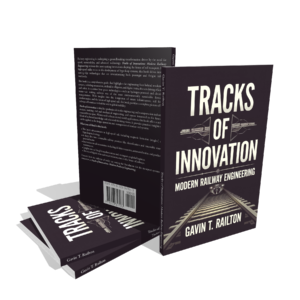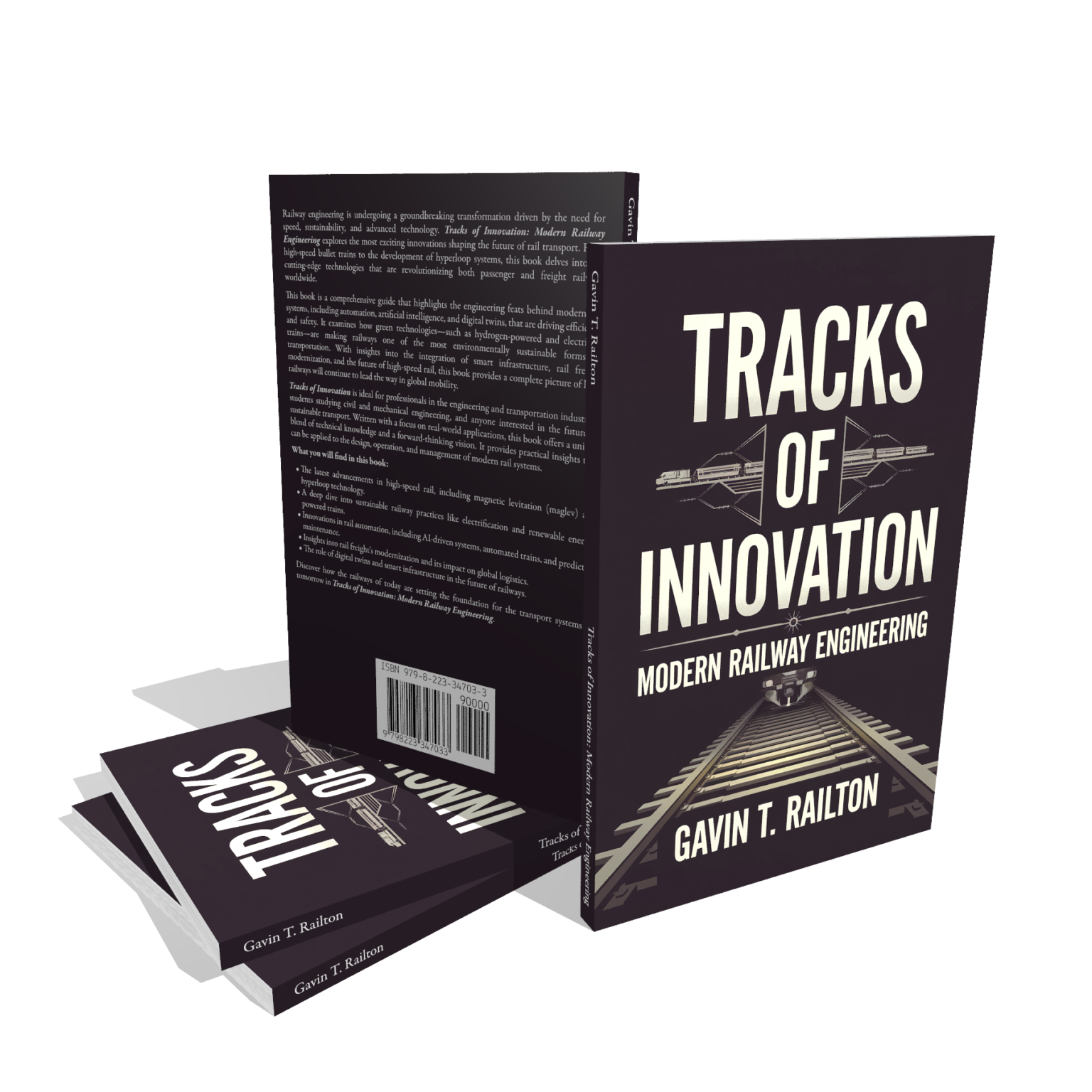Tracks of Innovation: Modern Railway Engineering – Complete Guide to Revolutionary Transportation Technology

Modern railway engineering is transforming the future of transportation with groundbreaking innovations that promise faster, cleaner, and more efficient rail systems. If you’re struggling to understand the complex world of contemporary rail technology or seeking practical insights into sustainable transportation solutions, this comprehensive guide offers the expertise you need. “Tracks of Innovation: Modern Railway Engineering” delivers 108 pages of cutting-edge knowledge that bridges traditional rail systems with revolutionary technologies like high-speed trains, hyperloop systems, and AI-driven automation.
This essential resource addresses the critical challenges facing today’s railway professionals, from environmental sustainability to urban infrastructure demands. Unlike generic engineering texts, this book focuses specifically on practical applications of modern railway engineering principles, making complex concepts accessible to both industry professionals and aspiring engineers seeking to master the latest transportation innovations.
What You’ll Discover
- High-Speed Rail Mastery: Learn the engineering principles behind cutting-edge train systems that reduce travel time while maximizing passenger safety and operational efficiency
- Sustainable Railway Solutions: Discover electrification techniques and hydrogen fuel technologies that dramatically lower carbon emissions in modern transportation systems
- AI and Automation Integration: Master the implementation of artificial intelligence for predictive maintenance, enhanced safety protocols, and streamlined railway operations
- Digital Twin Technology: Understand how virtual modeling systems enable real-time monitoring and optimization of complex rail infrastructure networks
- Smart Infrastructure Design: Overcome urban transportation challenges with innovative approaches to railway integration in crowded metropolitan environments
- Future Transportation Concepts: Explore revolutionary hyperloop systems and automated train networks that represent the next evolution in railway engineering
Why This Book Matters
Railway engineering professionals face unprecedented challenges as urban populations grow and environmental concerns intensify. This comprehensive guide addresses these critical issues by providing proven solutions for sustainable transportation development. The author combines technical expertise with practical insights, offering strategies that have been successfully implemented in real-world railway projects worldwide.
Whether you’re designing new rail systems or upgrading existing infrastructure, this book equips you with the knowledge to navigate complex engineering decisions. The focus on green technologies and smart automation ensures your projects align with current industry standards while preparing for future transportation demands.
Key Features
This comprehensive ebook spans 108 pages covering advanced railway engineering concepts, sustainable practices, and technological innovations. Available as an instant digital download, you’ll receive immediate access to detailed technical insights, practical implementation strategies, and real-world case studies. The format allows for easy reading on any device, with clear diagrams and technical specifications for hands-on application. Also available as audiobook on Google Play Books and Spotify for convenient listening during commutes or workout sessions.
Frequently Asked Questions
How does modern railway engineering differ from traditional rail systems?
Modern railway engineering integrates advanced technologies like AI automation, digital monitoring systems, and sustainable energy solutions. Unlike traditional systems, contemporary approaches prioritize environmental impact reduction, operational efficiency, and smart infrastructure that adapts to real-time conditions while maintaining enhanced safety standards.
What makes this railway engineering guide essential for transportation professionals?
This book provides practical insights into cutting-edge technologies actually being implemented in today’s rail projects. Rather than theoretical concepts, you’ll gain actionable knowledge about high-speed rail design, electrification processes, and automation systems that directly apply to current engineering challenges and future transportation demands.
Is this modern railway engineering book suitable for students and beginners?
Absolutely. The author expertly balances technical depth with accessible explanations, making complex engineering concepts understandable for students while providing valuable insights for experienced professionals. The 108-page format ensures comprehensive coverage without overwhelming detail, perfect for both learning and reference purposes.
Get Your Copy Today
Transform your understanding of modern railway engineering with this comprehensive guide to transportation innovation. Available for instant download at just $6.99, this ebook provides exceptional value compared to expensive engineering courses or technical workshops. Also available as audiobook on Google Play Books and Spotify for flexible learning. Purchase your copy through all major ebook retailers including Apple Books, Barnes & Noble, and Kobo to begin mastering sustainable railway technologies today.
Watch the Video Review

